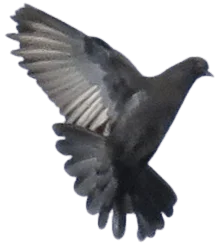
What You Need to Know About Raising Pigeons:
Your Questions Answered
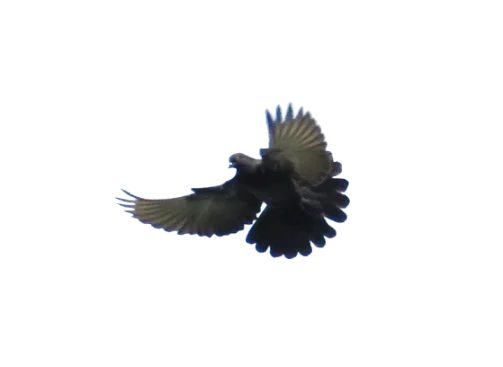
Finger-Tips

The goal of our “Quick-Tips” page is merely a way of offering easy access to some of the most often asked questions we receive while also providing crucial information on various topics. If you’re short on time and need of a quick answer, you’ve come to the right place. However, reading my blog postings will provide you with a more complete explanation. Have a question about something we didn’t cover? No problem; simply fill out the contact form below.
Foods and Essential Nutrients Tips
Birds prefer Small Kernel Whole Corn. Crack corn's sharp jagged edges are hard to regurgitate when feeding babies. Birds tend to leave crack corn in feeders and eat all the whole corn by choice.
Our Feed
Whole Corn
Red Milo
Iodine
Grit
Grass
Essential
Nutients
Whole Corn
vs.
Crack Corn
Great indicator of Iodine Deficiency - babies born with leg or walking issues. Put a few drops in water bucket and pour into all water containers each day. Breeders must have Iodine before laying eggs. Feeding birds Red Milo is also great source of Iodine.
Our Feed
Whole Corn
Red Milo
Iodine
Grit
Grass
Essential
Nutients
IODINE
Is A MUST!!
Grit -Granite Chips grind up food in bird's crop - Oyster Shell gives them calcium - Charcoal Chips protect them from bacteria. Mix all three together and be sure your grit feeder is always full, clean-free of debris.
Our Feed
Whole Corn
Red Milo
Iodine
Grit
Grass
Essential
Nutients
GRIT -
Why Birds
NEED It !!
Pigeons eat grass and grass clippings from being mowed. Grass provides essential vitamins. Build your flypen with access to grass and keep it mowed. Birds will eat clippings as well as pluck from ground.
Our Feed
Whole Corn
Red Milo
Iodine
Grit
Grass
Essential
Nutients
Pigeons Eat Grass -
Vitamin Nutrients
Words Of Wisdom
"When it comes to pigeons, a fool is a man who thinks he knows how the pigeon's mind works."
The way of a fool is right in his own eyes: but he that hearkeneth unto counsel is wise. Proverbs 12:15 KJV

Vic Hennig
4-Way Loft
Do your pigeons do this?
"Be mindful: - Pigeons will always find trouble. Give a pigeon a way to kill itself, it will. Leave a string lying around; it'll strangle itself."
"Gain their trust: Talk to them, call them by name, pick them up, sit with them inside their loft and aviary."

Vic Hennig
4-Way Loft

Disposing of Wastes:
Always remove and properly dispose of all wastes and excrement upon cleaning loft/coop & nest bowls on a daily basis.
First and Foremost...
Establishing CLEAN Daily HABITS is a MUST:

Create an ongoing habit to pick up a scraper every time you walk into your loft/coop. Clean, scrape, shovel and remove waste. This will do wonders for your birds health.
“Dump out any & all standing water to prevent mosquito egg laying.”


Purchasing New Birds: A General Rule:
Keep incoming birds isolated from your existing loft. Before integrating them with your other birds, place newspaper in separate cage to observe their feces for a few days. Good idea to follow same rule upon returning from pigeon shows.

Golden Oat Straw:
We determined that “Golden Oak Straw” is the bedding that our birds prefer after experimenting with several various kinds. We shop at a nearby feed mill. Always inspect and smell the straw bale before purchasing. We once bought something from a store, but it was old and moldy and unusable. Before entering loft with straw, be sure to shake it out and break it apart while shaking out any compressed dust. Then grab what you need and spread it out on the floor in the loft/coop.

Keep Grass Mowed Short:
Keep grass mowed throughout your yard and especially around your Loft/Coop and Aviary/Fly-Pen. This helps keep bugs , flies and mosquitoes to a minimum.
“Scrap perch & nest box front edge facing you. Pigeons use it to wipe their beaks, so keep it clean for them.”


Grass Clippings and Clover:
Keep grass cut short inside aviary/fly-pen as well as the rest of your yard. If your Aviary (for some unknown reason) does not have grass growing inside it, then when mowing, blow the grass clippings and clover into the pen so birds can peck and eat it. This gives them necessary vitamins and minerals they need.

Bedding DONT's
Cedar – Pine – Hardwood – Wood Chips/Shavings: never use in or around loft/coops/birds. Wood bedding contains highly toxic dust, oils and aroma from the woods itself that cause damage to the birds raspatory, liver function, cancer, illness and eventually death. Babies tend to die in the nest from the cedar shavings shortly after birth.

Keep in Mind When Choosing Bedding:
Before choosing bedding for babies in nest bowls or flooring material inside loft/coop, think about how it will impact the health of your pigeons. For instance: wood chips/shavings of any type will break down and separate turning into little fibers of wood. This now creates a hazard for your pigeons in the sense they will end up eating the now broken-down wood fibers with any spilt feed on the floor. The wood chips/shavings are highly toxic in itself to the pigeons by breathing in the dust, oils and aromas contained in the wood. But now your birds digested that poison creating crop and digestive problems.

What NOT to Use:
- 1.) Hay: doesn’t absorb, molds quickly harboring pathogens
- 2.) Pine Needles: have a strong aroma that can be toxic similar to the wood shavings. Not to mention, pine needles do not absorb the wetness of feces creating yet another messy toxic environment.
- 3.) Hardwood Shavings: Highly toxic from pine extractives
- 4.) Wood Chip Mulch: mold and moisture
- 5.) Tree Bark Mulch: cakes, splinter, mold, no absorbency
- 6.) Peat Moss: high dust causes all sorts of health problems and freezes in winter
- 7.) Leaves: mold bacteria
- 8.) Grass Clippings: doesn’t absorb, mold bacteria
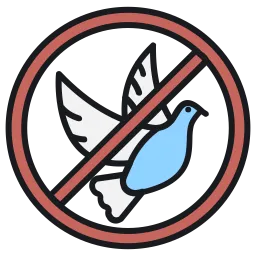
Is This You?
If you are using sticks, leaves and grass for bedding or simply waiting for your birds to go out and get their own supplies to make a nest, and feel this is perfectly acceptable then clearly you fall under the category of those that should not be raising pigeons. Bird mites and bugs thrive in dirty, wet, poopy nests, so how are you going to keep them clean on a daily basis?

Don't Use/Spray Pesticides, Fertilizer or Weed Kller on Your Grass:
Few people realize that illnesses or cancers they, their children, their dog, cat, birds or any other animal develope may in fact be from the chemicals sprayed on the lawn. Sure, your yard looks fantastic, but at what cost when you, your children, pets, birds, etc. are out sitting, rolling, laying or eating in-absorbing & consuming the chemicals.

The Big "Aha" Moment:
NEVER, EVER USE CEDAR Chips/Shavings for ANY Animal Period!!

Did You Know:
Cigarette Smoke is harmful to animals. In fact, exposure to nicotine tobacco products such as your cigarette smoke emits toxins when inhaled by your pigeons and can cause paralysis & cancer.

A Good “Bedding” Rule of Thumb:
When in doubt, hold any form of bedding you intend to use in your hands and bring it up to your nose. Hold it there for a few minutes. If you can’t do that without flinching and distancing yourself, you’ve got your answer. Logic dictates If you can’t tolerate it for just a minute or two, then how can you knowingly make your animals lay on and breathe in the toxins hour after hour, day after day and not expect them to get sick and die? Now that’s just cruel.
Signs of a Thirsty Pigeon:
They will have squinty eyes, which develops if they go even a day without water. Dehydration symptoms include wrinkled feet and clumsiness when walking. At this point you need to immediately check the water container. Dump it , wash it out and fill back up with fresh cool water. Then pick up the bird or birds that have squinty eyes and place them in front of the water container so they can drink. This is why it is so imperative you always keep water containers clean, fresh and filled at all times. And it goes without saying… Never allow them to drink if poop is in their water. Dump it and refill it.


Teaching Weaned Baby to Drink:
Place the young pigeon on a flat surface in front of the water dish. Make sure both feet are firmly planted on the flat surface beneath it. Place your fingers behind its head and gently push its head into the water bowl. All you are doing is allowing the baby to feel the water with its beak. Never hold the head under the water. Do this a few times, as the baby should just start drinking right away. If not, no problem; simply try again later. The young pigeon is now learning what water is and where to find it. Normally eating and drinking is a survival skill taught by its parents, but in cases where you wean them straight out of the nest, then the onus falls on you.

Signs of a Sick Pigeon:
- 1.) Inactivity: sitting in once spot with its head tucked down and neck not protruding out.
- 2.) Looking a bit poofy
- 3.) Wing tips descending from the top of the tail to now below the tail.
- 4.) If wing tips are dragging on the ground, then its most likely going to die as it’s very sick.
- 5.) Feathers between the eyes are scruffy while healthy pigeons are always smooth.
- 6.) Bird that feels light and you don’t feel food in the crop.
- 7.) Poopy butt is Hugh indicator something’s just not right and bird isn’t feeling well.
What Can Cause Sickness - Possible Indicators:
- 1.) Too hot & humid in the summer
- 2.) Too cold in the winter
- 3.) Too ventilated - cold wind blowing in during winter
- 4.) Dehydrated – not enough water
- 5.) Drank dirty water
- 6.) Coop/Loft is too dirty and air quality is very poor
- 7.) Food you feed is spoiled/moldy from humidity
- 8.) Lack of nutrients in the choice of food you feed
- 9.) Not enough grit, calcium, charcole or iodine in their diet
- 10.) Lack of food – you ration the birds food amount
- 11.) Contaminated food, water and their containers
- 12.) Overcrowding of birds in the loft/coop/fly-box
- 13.) Bug bites from in and around loft
- 14.) Mice/rodent droppings inside loft
- 15.) Wild birds getting into your loft leaving their droppings
- 16.) An injury can lower immunity causing them to become sick
- 17.) High Stress levels
- 18.) Lack of sleep

Nursing Pigeon Back to Health:
- 1.) Know your pigeons-watch their behaviors
- 2.) Does it eat, does it drink, does it fly around and act normal
- 3.) Is it poofy - sitting all bunched up, are feather dirty and scruffy
- 4.) Remove bird from loft, put in separate cage
- 5.) If its winter – bring it into the warmth
- 6.) If its summer – bring it into the cool
- 7.) Give it a shot of Ivermectin (read dosage directions)
- 8.) Give it constant food and water
- 9.) Give it a comfortable quiet calm space so not to stress it out further
- 10.) Check its poop – give it a borax bath so it’s clean
- 11.) It may need antibiotics a few times a day for a few weeks
Signs of Paratyphoid:
- 1.) Impacts digestive system causing loose greenish slimy droppings
- 2.) Inflammation of joints - swelling in leg, ankle or feet
- 3.) Wing may develop painful boils
- 4.) Swelling in the shoulder joint of wing causing wing to droop or even touch floor making bird tremble from the pain
- 5.) Limping or difficulty flying or unable to fly
- 6.) Rapid weight loss
- 7.) Not as common, but an abscess (pocket of puss) can form in the brain causing twisting of its head or unable to lift its own head from ground
- 8.) Babies may develop labored breathing and die and can die while still in egg

What is Paratyphoid:
Salmonella bacterial infection of the intestinal tract and bloodstream. Once in the bloodstream, it can spread to other organs such as lungs, liver, spleen, testis, ovary, brain, muscle, skin and joints.
“A bird’s general health must include Probiotics, Nutrition, Vitamins, Minerals and Grit mix in their daily diet.”
Transmission of Paratyphoid:
- 1.) Primarily airborne– This is why Hygiene is so crucial; instill good clean daily regimen habits of keeping your loft/coop/fly-box clean
- 2.) Scrap and scoop out all droppings daily, making sure to dispose of all dropping properly
- 3.) Clean all water and feed containers to ensure no contamination is in either
- 4.) Clean all nest bowls with babies daily
- 5.) Droppings dry up and become dust. This dust can contain the Salmonella bacteria the birds are breathing in causing Paratyphoid. The Salmonella in dust from droppings can survive on the ground inside or outside loft for months if you do not clean it up.
- 6.) Infected dust particles from dropping and feather dust contaminate the air and thereby inhaled by pigeons and ingested through the food and water the dust settled in.
- 7.) Overcrowding in loft/coop/fly-box can induce stress in pigeons thereby contributes to sickness. Disease thrives when immunity is lowered

A MUST for Paratyphoid or anything else:
- 1.) With shoes on, step into a shallow pan of strong bleach water to prevent being a carrier
- 2.) Wash your hands before and after handling birds
- 3.) Limit the number of visitors to your loft
- 4.) Change your clothes if you came in contact with infected bird – Disease can transmit on clothes
- 5.) Give your birds a Borax Bath no less than once a week
How to Prevent Paratyphoid:
- 1.) HYGIENE IS CRUSIAL – Everything in and around birds MUST be kept Clean and Sanitary
- 2.) Clean your Loft on a daily basis
- 3.) Remove ALL droppings and debris in and around loft daily and dispose of properly
- 4.) Clean water, feed and grit containers daily
- 5.) During breeding season, remove and replace All nest bowl bedding daily
- 6.) DO NOT overcrowd you loft with too many birds
- 7.) Do Not cause birds to become stressed – Stress is a hugh factor in birds developing disease, infection and sickness
- 8.) Heat loft in winter and cool loft in summer
- 9.) Cover all openings with screen at night to keep bugs and mosquitoes from getting in and biting birds
- 10.) Sleep deprivation is another big factor in leading to sickness – Birds need to rest and sleep
- 11.) Quarantine for every new bird
- 12.) Quarantine after every Pigeon Show
- 13.) Sanitize all travel crates / baskets
What are Signs to Look For:
- 1.) Diarrhea-watery greenish poop
- 2.) Reduced appetite
- 3.) Increased thirst
- 4.) Staggering when walking
- 5.) Twisting of the head/neck upside down (clear sign)
- 6.) Trouble pecking/picking up seeds in food
- 7.) Tossing seed behind their head
- 8.) Turning in circles
- 9.) Falling over-laying upside down
- 10.) Paralysis of legs or wings is also possible
- 11.) While up flying you see un-natural movements they’ve never done before could be the onset of this virus

What is Paramyxovirus:
It’s a viral disease that spreads from pigeon to pigeon by various means…
Such As:
- 1.) Water contamination
- 2.) Food contamination
- 3.) The loft/coop itself
- 4.) Anything in - out or around the pigeons can be contaminated and needs to be thoroughly cleaned immediately
- 5.) Feeders, water containers, nest boxes, nest bowls, perches, the floor, carrier crates, everything needs to be sterilized to kill the virus.
- 6.) You-yourself could inadvertently give this virus to your healthy birds
- 7.) Have you visited other lofts or coops? Did you see a sick bird?
- 8.) Go home, step with shoes on into a pan of bleach water, wash your hands and change your clothes before going anywhere near your birds. You can be a carrier of the virus on your clothes-shoes-skin.
- 9.) Lastly…an Infected Mosquito can bite your pigeon(s) and spread it that way
Ways of Preventing Exposure:
- 1.) Always keep loft/coop clean-scrape perches and remove all debris from loft daily
- 2.) Wash out water container daily and always have fresh clean water for birds to drink
- 3.) Dump out and whip down food feeders daily before adding new food
- 4.) Keep food-grains in a cool dry storage to prevent contamination
- 5.) Keep mice and their droppings out of loft
- 6.) Keep mosquitoes out
- 7.) Prevent wild birds and their feces from having contact with your birds
- 8.) Segregate newly purchased birds from your birds to monitor for several days before mixing them in
- 9.) Always good practice to limit the no. of visitors you allow in your loft
- 10.) Vaccinate your pigeons
What to Do:
- 1.) Remove any and all sick pigeons exhibiting signs away from the flock. They need to be segregated away from all other birds
- 2.) I would try a shot of Ivermectin (read directions) and make it comfortable in a separate cage with constant food and water
- 3.) Keep and eye on it, check its poop
- 4.) Always wash your hands and change any clothing after handling sick bird so not to transmit virus to healthy birds
- 5.) Is it possible for bird to make a full recovery; only time will tell, but odds are not likely in this scenario
- 6.) Odds are – the bird will die

Advice to Adhere to:
This virus is primarily shed in the droppings and spreads via fecal dust, therefore wash your hands after contact and avoid tracking fecal waste or carrying fecal dust on your clothes to areas where other healthy birds are. Droppings should be properly disposed of because they can infect wild birds.
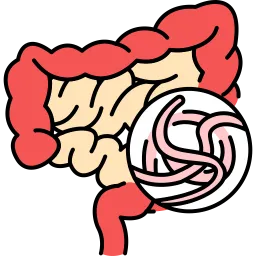
What is Canker:
Canker is not a bacteria or virus; hence antibiotics will not work. Canker is a disease caused by a Parasite affecting bird’s digestive tract – throat, crop internal areas. Since the canker parasite thrives in saliva and crop milk, it’s common for babies in the nest to get it from parents feeding them.
How Do Bird’s Get Canker:
Well, it goes without saying, many (not all) animal health problems start and end with the owners and the care or lack there of they provide to the animal. Good-Clean Habits are essential.

How Canker Parasites Spread Through Contamination:
- 1.) Dirty contaminated drinking water shared by all birds
- 2.) Dirty food with debris of sorts or feces in it
- 3.) Moldy, rotten, contaminated foods and grains
- 4.) Grains/foods can turn spoiled when stored in high humidity
- 5.) Stress is another Hugh factor – canker is microscopic lying dormant in adult birds as 80% of all pigeons are natural carriers, so preventing your birds from getting stressed out can potentially prevent a triggered outbreak.
- 6.) Overcrowding of birds in the loft is a hugh stressor on pigeons.

Some Remedies to Try:
- 1.) A few drops of Iodine in drinking water – this sterilizes the water
- 2.) Add Activated Charcoal Chips to their Grit mixture – This cleans their crop and gizzard killing any bacteria and toxins
- 3.) Adding Garlic, Lemon, Apple Cider Vinegar to drinking water are also widely used by pigeon fanciers. There is a wealth of info and the various ways to use them posted on the internet if you google it
- 4.) Personally, I find putting Vital in the drinking water works well.

What Causes a Stroke in Birds:
- 1.) Poor Diet – Not enough nutrition over a period of time (example: feeding nothing but wheat and/or red milo = no nutrition)
- 2.) Disease and Parasites
- 3.) Sleep Deprivation
- 4.) Old Age (this has been the culprit for Stroke in my pigeons)

Noteworthy Facts:
- 1.) • Generally speaking, with strokes, only one side of the body will suffer paralysis as only one hemisphere of the brain is affected.
- 2.) • Blindness: usually occurring on the same side of body affected by the stroke. A few signs bird is blind in one eye include staggering, lurching forward, or even twirling around on the floor.
- 3.) • Avoid environmental stressors: Avoid exposing birds to environmental stressors such as loud noises, extreme hot and cold temperatures, and overcrowding.
Do Pigeons Have Strokes?
Yes, like humans, so to in pigeons, but may prove difficult to identify as the symptoms can closely mimic those of Paramyxovirus.

Not a Stroke - Other Causes of Paralysis in Birds:
- 1.) • Exposure to nicotine tobacco products such as cigarette smoke.
- 2.) • Sleep Deprivation - birds rely on sleep to cleanse and detoxify the brain. Denying a pigeon sleep increases the risk of neurological illness and disease, including a stroke.
- 3.) • These are just two of many reasons why: A.) Never smoke around pigeons and B.) Mosquito prevention is so important.


Symptoms Indicating a Stroke:
- 1.) Falling
- 2.) Loss of appetite
- 3.) Odd vocalizations
- 4.) Blindness in one or both eyes
- 5.) Paralysis of one side of body
- 6.) Seizures
My Pigeon Stroke Story:
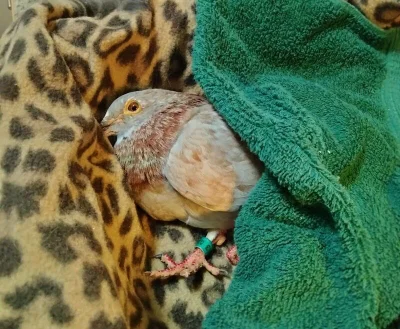
Part 1: A Stroke can indeed kill a pigeon, but on the flip side, with the proper care, it’s possible to survive and thrive. I know this to be true; I’ve done it with a couple of elderly champion racing pigeons of my dad’s over the years. In fact, I just recently nursed one back to health, and it is now walking, eating, and flying on its own. It took me seven months of having him live in my laundry room all winter… Oct. 2022 – May 2023, but he’s overjoyed to rejoin his commands out in the loft and aviary now that the weather has turned warm. Did I mention he’s a 20-year-old “AU Hall of Fame” Racing pigeon? So, as you can imagine, he’s old and has been in countless races during his prime. Yes, he is well worth the effort. He was giving up on life as one half of his body was paralyzed. I had to hold him up to eat and drink each time and then prop him up against a pillow for resting so he wasn’t lying flat on his side. I thought I was going to lose him; he seems depressed.

Part 2: After a few weeks, I had a female roller that tumbled down, getting caught on the netting and injuring her leg. I brought her in, and the next day I decided to see what would happen if I put her in with him, and from then on, I just watched and marveled as he put forth the effort to get better and stronger.

Part 3: In the end, before moving them both back out to their perspective lofts, he was cooing all over her and wanting her to make a nest with him. Not to mention, he started wanting to fly around the house when I wasn’t paying attention. When I put him back in his loft, his mate flew right up to him, almost saying, Hey, where have you been all this time? He was excited to be back and see her again. Yep, he’s back. Like I always say, and I will say it again, “with God, all things are possible.” You just need to have faith and ask in prayer.

Toxic Trees, Leaves, Etc:
- 1.) Black Walnut Tree Leaves: If you have one, pick up any leaves on the ground so birds nor chickens can eat them.
- 2.) Red Maple Tree Leaves – If you have one, pick up any leaves on the ground so birds don’t eat them.
- 3.) White Cedar Tree (part of the Evergreen family)
- 4.) Pine Needles: have a strong aroma that’s toxic for pigeons to breath in
- 5.) Wood Chips/Shavings such as… Cedar, Pine, Hardwoods: toxic dust, oils, and aromas on these types of woods cause damage to bird’s raspatory, liver, creating cancer, illness and death.
- 6.) Styrofoam: Always cover insulation with wood, paneling or wrapping of some sort. Not sure why, but birds and chickens alike are drawn to want to eat this stuff.
Based on What Grows in My Area so Not a Complete List of Toxins

Did You Know...
Tobacco Toxins Can Cause Paralysis:

Are you a Smoker? Do you Smoke around your pigeons and loft? Are you aware that exposure to nicotine tobacco products such as your cigarette smoke emits toxins when inhaled by your pigeons can cause paralysis? Your cigarette smoke contains over 7000 chemicals and more than 70 of those cause cancer. Secondhand smoke is far more damaging to the animals and people around you than it is for you..the smoker.

Toxic Plants and Leaves:
- 1.) Ivy Plant
- 2.) Milkweed
- 3.) Poison Ivy
- 4.) Poison Oak
- 5.) Rhubarb (leaves)
- 6.) Poison Hemlock & Water Hemlock Plants – Highly toxic and deadly to all living species. "DON'T Touch It."
- 7.) Marijuana
- 8.) Tobacco

Mosquito Awareness:
Prevent Paramyxovirus / Paratyphoid / West Nile and other illnesses– these are injected into the bird through an infected carrier mosquito. I have found many people are baffled as to how and why their pigeons are getting sick, never having taken into consideration just how deadly and damaging mosquitos are to the pigeons. Yes, wild pigeons live outside year-round without protections from heat, cold and bugs, but keep in mind those pigeons only live a few years at best. Just to put into perspective, I have many pigeons that are 15-23 yrs. old that I have had since they were born. we wrote a detailed Blog Post on: “how we kill and deter mosquitoes to protect our birds“.

Loft Protection: Mosquitoes, Flies, Gnats, etc.
Summer’s great, but with that comes bugs and bug bites. Yep, I do mean for your birds. Birds, like humans, are prone to bites and hence require protection. If you haven’t already, then your loft/coop/fly-box/etc., needs a makeover. You need to purchase a roll of mosquito screen/netting and/or home window screens for your pigeon structures. In the evening, when you lock in your birds, cover every opening, including the portholes, with screen. Also cover open grate flooring that allows mosquitoes to pour in during the night. Read our blog post: “from winterizing to summarizing your loft“.

Bird Mites:
This one is quite easy to remedy. Keep your loft/coop clean daily. Clean/scrap nest boxes and change all nest bowl straw 1-2 time per day. Make sure you have air flowing through loft in summer such as a fan blowing to keep loft from getting to hot & humid as bugs thrive in the hot heat. If you find mites on birds, give them a borax bath and you can also use Raid Flying Insect spray (blue can) to spray under the wings of infected birds and babies for immediate relief as the spray kills bugs on contact. Then go back and do a thorough job of cleaning your loft/coop. If you want more info, read our Blog Post on: “bird mites“.
Type of Nest Bowls:
We use nest bowls made completely out of wood (in fact I made each one myself), but we also use plastic dog food bowls & ceramic type bowls. Drill a few small holes in bottom for liquid to drain, then cut out circlular shapes of new boat carpet, glue it down inside bottom of each bowl to prevent deformity of legs slipping out from under baby birds. Straw will then cover the carpet.

Keep Nest Bowls Clean:
Always ensure your pigeon babies are clean, dry and bug free in their nest bowls. Change nesting 1-2 times per day.
Bedding for Nest Bowls:
Golden Oat Straw –we buy bales from the local Feed Mill, then use scissors to cut into finger length pieces so babies will not get tangles in the long straw. Always smell straw to ensure it’s not moldy (depanding on where you buy from) and shake out any dust before use.
Read Our "DON'Ts" Tab:
For a more detailed list of what Not to use for bedding and why, check out our DON’Ts Tab above.

Cleaning Nest Bowls:
Nest bowls should be cleaned out each and every day when babies are old enough to start pooping in and around the sides of bowl. Remove All nesting in and around every nest bowl 1-2 time per Day. This will ensure babies will always be in a clean, dry, bug /mite free nest to grow fast and healthy.

Never Push Birds Out the Porthole... at First
When training pigeons and removing the outer cage, always let the bird decide when it’s ready to go out through the porthole to the outside. On day one they might go out the porthole and just sit on the landing as they are still observing their surroundings. Don’t scare them up. Repeat this process for the next 2–3 days to ensure the pigeons fully grasp entering and exiting through the porthole. They will build confidence and take flight. If you force them out before they are ready, they may fly away and be unable to return. You can easily push them out to fly once you know with certainty that they can go in and out on their own and have already taken flight.

Know Your Hawks:
Hawks hunt & feed first thing in the morning, so by noon or so it’s plausible they’ve already found their meal for the day. But, keep in mind they may come around eyeing up your birds late afternoon or towards evening if they have not found a meal yet. What does this mean for you? Simply put, the hawks must have found a meal before you release your birds or else your birds will be the hawks’ meal for the day. So, the long and short of it… Keep your eyes peeled, comb the skies before releasing your birds. If you have a hawk problem, try switching up the time such as waiting until the afternoon to let them out. If you have a known hawk problem, be sure to be out there with your birds while flying so you can raise a ruckus scaring off the hawk should one show up.

Windy—What's Too Windy?
Weather’s a big factor when flying birds. Strong gusty winds can push birds away from home. They become disoriented as the winds carry them further away until they’re lost. I tend to stick to a rule of 18mph max. There is no point in beating up your birds or worse… losing them. Imagine how fearful they are when they’re get hauled away in a gust of wind to a strange land losing their security. Not to mention, strong winds can also be a sign of bad weather rolling in.
On the flip side: Our pigeons prefer flying when there’s a nice breeze or light winds such as 7-15mph. They use the wind for lift in flight, thus making it easier and, I’d imagine, much more enjoyable to fly around. Dead, stagnant air… not so much.

Flying Pigeons—How Late Is Too Late?
The honest answer: Birds should never be out flying after they eat so call them down before you feed them in the late afternoon-early evening. This way they come down, go in, eat-drink and settle in for the night.
In hindsight, it’s best to call in flying pigeons before the sun lowers. When the sun sets or nearly sets, there is still plenty of daylight for us to see everything, but not for the birds up in the sky. It’s now dark up there, making it challenging to see how to descend. Just because you can see them soaring above the loft doesn’t mean they can see you or the loft. As a result, they may become nervous and fly away in search of safety and shelter for the night. Perhaps in a tree, but as we all know, owls, raccoons, etc. hunt at night.

Keep Wild Pigeons & Birds Out of Your Loft!
Flying your birds may attract a wild pigeon hunting for an easy food source and refuge. Check your birds in your loft to ensure no strangers are hanging out with them. They have the potential to spread disease.

Building a Coop/Loft:
The floor, roof, door, walls, and windows are all completely insulated. Don’t take shortcuts if you want healthy birds with longevity; do it right the first time. Insulating keeps structures warmer in the winter, cooler in the summer, and DRYER year-round. Just make sure you cover any exposed insulation with plywood or paneling of some sort. Insulation is toxic when eaten by all animal species, despite the fact that a lot of animals seem to be drawn to it for reasons unbeknownst to me.
Clean-Scrape Loft/Coop Daily:
Train yourself to clean your loft/coop on a daily basis so it never becomes a daunting task. Now your birds will stay clean living in a healthy environment with clean feet and clean air to breathe. My dad taught me as a child to never walk into the loft without grabbing the scrapper and scraping down the boxes and perches. Then grab a shovel and scoop up all that was pushed onto the floor. My dad’s loft was always clean and never smelled bad or had dusty air. I am grateful to him for instilling excellent habits early on. My birds reap the benefits on a daily basis.

Trailer Turned into Coop:
If the city you live in said you’re not allowed to have a shed or a coop of sorts, but they did say you’re allowed to have an enclosed trailer, you could then convert the enclosed trailer into your pigeon coop. Just make sure it has current registration and license plates on it at all times to legally keep that trailer parked in your backyard. At this point, the outside clearly resembles a trailer, but inside it could be all decked out for your pigeons. I wrote a blog post on how to do this properly.
Now, let’s talk about the various types of Loft/Coop Structures… The Big

The Big DON'Ts in Loft/Coop Structures - What NOT To Do:

Don’t Use Tarps to put over or wrap around your coop structure such as covering an open wire cage. Don’t use a tin or metal structure and call it a coop without fully insulating inside. Open-exposed wire walls of structure, nor should you use an un-safe shack or plastic barrels or containers. Common sense should dictate why these are all very bad ideas, but I’ll explain:


- 1.) • TARPS - shake & rattle in the wind freaking out the birds putting them in panic mode thus creating never ending stress which leads to sickness, stroke and/or death.
- 2.) •Tin-Metal-Corrugated metal structures -create extreme heat in the summer thus basically cooking your birds. You MUST Fully Insulate.
- 3.) •Open Wire - walls/floor/doors of any kind are always a bad idea, unhealthy & unsafe for birds. Exposure to hot heat, cold winds, extreme temps, biting bugs and varmints.
- 4.) •Plastic Barrels – Containers are wrong on so many levels. The plastic heats up like an oven in summer and so cold in winter. Not to mention the plastic emits toxic chemicals as it heats up forcing birds to inhale.
First and Foremost... NO DIRT FLOORS:

Let me just start off by saying… Dirt floor-no floor loft/coop is Never a good idea. So many things wrong with this set-up. NO self-respecting pigeon person would have a dirt floor in their loft/coop. If this is you and this hurts your pride, all I can say is, get over it and do right by your birds.
- 1.) • Rodent intruders digging underneath
- 2.) •Insects-bird mites-various bugs-snakes-rats-weasels-mice-etc.
- 3.) • Breeding ground for moisture, bacteria, mold, ammonia, dust.
- 4.) • Bed rock for disease, toxic air, fungus growth, the list goes on.
Just a Re-Cap:
No Dirt Floors-Ever INCLUDING Old Barns Structures. This creates health problems such as respitory damage, fungus damage to lungs, various diseases such as, Paramoyvirus, Canker, Paratyphoid, mosquitoe bites transmitting dieases and varmints eating or just killing your birds. Your are kidding yourself if you think the layers and layers of dried up poop, dust and mites are not going to eventually kill your birds just by sitting in that toxic enviornment.



Benefits of Having an
Aviary/Fly-Pen:
Having an actual aviary instead of a tiny wire cage hanging on the outside of your loft with no access to grass or the ground is a game changer for your birds. This pen will allow birds the freedom to go in and out at will when they are not up flying. You will have piece of mind that they are safe while able to be outside and not locked in when you’re not home. Whether I fly my birds or not, every loft/coop has its own attached aviary/fly-pen. Each one is larger than a typical living room, so there is plenty of space and grass. In fact, many of them actually do flips inside the fly pen while flying around. My birds can catch the breeze, soak up the sun, enjoy the views, eat grass and clover on the ground and get some exercise all while I’m at work. During the hot summer days, they choose to spend more time inside the loft with the fan blowing.

What You'll Need—Good Options for Pen:
- 1.) Dog kennel fence panels work best
- 2.) Chain-link roll of fencing with the metal poles
- 3.) Railroad ties or long wood blocks such as 6x6 or 6x8
- 4.) Wood blocks keep fence from sitting flush with ground
- 5.) Wood blocks offer overhead height for the netting
- 6.) Wire or fence panel connectors connecting panels
- 7.) Fence panel with a gate
- 8.) Roll of strong black nylon netting to stretch over the top
- 9.) Long pipe or pole to hold up netting height-over time can sag
- 10.) Wood posts and 2x4 boards to make outdoor seating/perches
- 11.) Make sure there are no sharp edges or nails sticking up

(Making) (Building) Constructing a Good-Size
Aviary/Fly-Pen:
Look for used dog kennel/fence panels with a gate. Chain-link fencing with poles is another option. Buy a role of nylon netting. Cover the top by stretching the netting and securing it to all sides to the fence panels and the pigeon coop/loft structure. Buy railroad ties or wood blocks no less than 6” high to put down under fence panels. This will make the pen higher so your birds can fly around with ease as well as your ability to walk around inside. Use long metal poles to support netting overhead holding it up so it doesn’t sag later. Then Dig holes for wood posts in ground and attach a few long 2×4 boards for outdoor perch/seating.
Summer
- 1.) Keep grass mowed short inside pen.
- 2.) Bugs & mosquitoes love tall grass
- 3.) Always look up checking netting for holes
- 4.) If a hole opens, use zip ties to pull it shut

Aviary/Fly-Pen
Maintenance:
Winter
- 5.) Snow can weigh down netting
- 6.) Walk inside pen—shake snow off netting
- 7.) Shovel areas inside pen for birds to sit on the ground
- 8.) Brush snow off outdoor perches
Ventilation...How Much?

Birds require a lot of moving air to stay cool during the hot, humid summer months. This is true regardless of whether you have a large loft, a medium-sized coop, or a fly-box.
Summer...
Ventilation/Cooling/Bugs

First and Foremost...
INSULATE Structures
Ideally, all pigeon structures, including coops, lofts, and fly-boxes, should be fully insulated to protect the birds from excessive heat/cold and moisture that might cause mold.


Screens
Cover all openings with screen to keep mosquitos and flies out. Mosquitoes and bugs can cause health problems, therefore use mosquito screens to cover every opening, including port holes, for complete protection.

Loft Door:
During the summer, I utilize house screen doors on each loft, which lets in a lot of light and allows for effective cross-flow ventilation through the screens.
Summer To Do's
- 1.) Keep grass mowed short inside pen.
- 2.) Bugs & mosquitoes love tall grass
- 3.) Always look up checking netting for holes
- 4.) If a hole opens, use zip ties to pull it shut
Box Fan/Portable Fan:
Use Fans during summer days/nights to keep pigeons cool from heat/humidity.
When On …When Off?

In general, we switch on fans in the morning when the temperature rises above 70 degrees. We only turn it off at night if the temperature dips to the mid-70s, the humidity isn’t too high, and there’s a pleasant breeze blowing.
Basically, I evaluate my lofts in the same way that I evaluate my properly insulated garage…if my garage is stuffy and hot, I leave fans on. If my garage is comfortable I turn them off. The birds love hanging out in the loft with fans blowing.

Grate Floor - Skirting:
If your pigeon house has a grate floor, use plywood or smartboard siding as skirting all the way around the outside of the loft year-round to protect birds from mosquitoes, varmints and weather elements. If you attach using screws, it’s easily removed for cleaning underneath.
Ventilation...TOO Much?

During the cold, windy winter months, birds should be housed in a completely enclosed (and ideally entirely insulated) structure where wind and cold air cannot enter. Utilizing insulated windows with screens is advised. On those cold brisk, windy nights, just slightly crack the window open an inch or two.

Grate Floor Covered with Plywood and Straw:

Winter gets cold and grate/wire floors can make pigeons feet cold and exposed causing illness and in some cases loosing toes. Therefore, use plywood sheets to cover the entire grate floor. Then lay new straw on top of the wood. Keeping the loft clean during the winter truly requires changing the straw.
Winter...
Ventilation/Heating

First and Foremost...
INSULATE Structures
Any pigeon structure—loft, coop, or fly-box—should be completely insulated to safeguard birds against hypothermia. Buy one or two heat lamps. Seal off any openings to prevent wind and cold from entering.
Windows:

Mostly close the windows, but leave one slightly open. Cover any openings with glass windows, Plexiglass, or wood if you don’t have any real windows. Remember to cover the port hole with wood that can be removed or something similar.
Doors:

To keep lofts warmer during the winter, I swap out the screen doors for external doors, similar to the ones on my house.
Heat Lamps:
On frigid winter days and nights, use heat lamps to keep pigeons warm while breaking up the never-ending long dark hours.

When On …When Off?
I usually switch on heat lamps when the temperature drops to around 10 degrees & colder. Keep in mind, here in MN, winter windchill might be 10–20 degrees colder than the actual temperature. I leave the lamps on all day and all night if I see the drinking water is freezing. This allows birds the freedom to roam around during the otherwise lengthy 16 hours of typically frigid darkness. With heat lamps, they are no longer forced to sit in one spot all night shivering.
In essence, I evaluate my lofts in the same way that I evaluate my properly insulated garage…if I’m cold wearing a coat, I turn on heat lamps. If my garage is warm enough for me to wear a sweatshirt, I turn them off.

Wear Gloves
When cleaning loft/coop, wearing gloves will protect your hands from splinters, feces and mishaps while scraping perches and shoveling floor.

Pigeons Cost Money
If you are strapped for cash, pigeons are not for you. Raising pigeons can get a bit spendy with coop structures, foods, grits, nesting, drink and food containers, nest bowls, bath pans, screens, fans. insualtion, heat lamps, bug spray, scrapers, waste removal…to name a few things. All Club dues and expenses are extra. Not to mention all the time you will need to dedicate to your birds. So, bottom line… don’t raise pigeons if you can’t afford them. Nothing worth having is free.

Telephone Wires & Power Lines
Try keeping pigeons away from overhead power lines when flying. If a bird flies into one of these wires, it might easily be cut or killed. Birds have trouble seeing such wires when flying at great speeds.

COMPOST Pigeon Poop
Plant a garden? Growing grass? Floral vases? Dried Composted pigeon poop is nitrate-rich, making it an excellent fertilizer. Sprinkle it around the garden when turning dirt and planting; mix it with grass seed; or incorporate it into the loam or potting soil for houseplants. Not too much, it’s potent. Nevertheless, make certain to Compost it before utilizing it.

Wear A Hat
Wear a hat in and around your loft/coop. Baseball hat or winter ski hat, keep your head covered to prevent pigeons from getting tangled in or pooping in your hair.

City Ordinances
BEFORE purchasing pigeons, ALWAYS check your local city ordnances to ensure you will not be hassled and penalized by the authorities & be forced to get rid of your birds. Inquire with the city about what buildings/structures are allowed in your yard under the city’s rules. For instance, are you allowed to have a shed, a trailer, a coop, or a loft in your backyard? If so, is there a size limit?

Talk to Your Birds
Birds feel comforted by the sound of your voice and thereby learn to associate you with safety, calmness and food. They then learn to respond to your voice, whistle, and shaking of food.

City Water - Galvanized Container:
City water contains too much chlorine-causing galvanized drinking containers to rust. A-work-around: Fill bucket with water, let stand in a shaded cool place for 24hrs so chlorine can evaporate. Give pigeons fresh water several times a day.

How Often Should You Change Water:
During summer months, I dump out and replace with fresh water 2-4 time a day. Water should always be clean and cool. During winter months, I water pigeons 2 times a day- morning and afternoon. When it’s really cold, my bucket of water can start to ice over before I can even make the rounds, so at this point I will use warm water.

Wash Drink Containers:
Depending on the type of water you have, i.e., city water, well water, or spring water, water by itself can cause drinking containers to sprout orange rust particles, fungus, or some sort of green, mossy stuff. Always rinse out before refilling with fresh cold water. Also, start a habit of washing all drinking vessels in a bucket soapy water once a week to ensure all traces of water accumulation are eliminated.

Fresh Water:
It’s essential your birds have fresh clean water to drink at all times to prevent sickness. Never allow for old stagnant dirty water in their water containers.
Dump Out Feeders:
A food feeder should always be emptied or turned upside down before adding new food. If you do see something stuck in it, take your hand and brush it out. This will prevent food contamination. It’s also good practice to do the same with grit feeder.

Pick up Any Leftover Food:
Should food be left in feeders over night? No! In the summer, I feed my birds around 6 p.m., and in the winter, I feed them around 3 p.m. I’ll return after everyone has finished eating. If they gather at the feeders when I enter, I will feed them a little more, but if they are all settled on their perches or nest boxes, I know they are satisfied. At this point, I’ll go through the feeders and pour any leftover food into a bucket. Leaving food in feeders overnight attracts mice.
Feeding Corn:
KNOW that corn is like eating butter. It’s a great source to keep birds warm in the winter, but it’s hot and heavy in the summer. So be mindful.. feed more corn in winter mixture, but only add a small amount to the summer mixture.
Food Storage:
Be mindful that feed cannot be stored in a hot, humid or damp environment. Feed will grow mold and rot, and I’m not just talking about corn here. Keep all feed in a cool, dry area that is well-ventilated and protected from rodents and their feces.
Always Have Grit
Mix granite chips, oyster shell and charcoal chips together in grit feed container. Grit is so essential to a birds well being that I find it necessary to reiterate this topic again to insure your birds have a steady supply available at all times.
SPOILED Feed:
NEVER feed birds rotten or moldy corn, grains or other feed. It Will make birds sick. Birds can’t fly sick.
Summer Bath Time
Birds really like taking bathes and the feeling of being clean. Birds prefer sunny mornings so put bath pans out no less than once a week in the summer. Sprinkle a few shakes of Borax in the water while filling bucket to pour into water bath pans. This will clean their feet and remove any excess white chalky dust their feathers make. I will actually give Borax baths every 3 days in the heat of the summer. If it’s really hot & humid on those inbetween days, I will fill bath pans with plain cold water to keep them cool. Although my birds are quite smart, on those hot days they will choose to relax inside their loft chilling with the fan blowing on them.
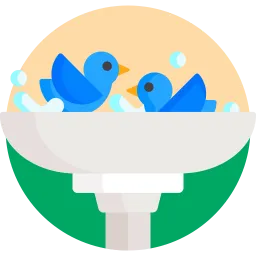
Click here to read more about the ins and outs of bathing pigeons. But all in all, Borax is our go. Borax does a really good job of keeping birds’ feet clean, washes off the white dust they accumulate in their feathers and keeps them over all healthy while keeping the dust down inside coop. I should also mention none of my birds have any bird bugs, mites or sickness of any kind.
Winter Bath Time
Birds enjoy bathing on the warmer sunny days when temps reach a whooping warm 25-30 degrees. Be sure it’s sunny with little to no wind. Must be done in the mornings when the sun is high. Use Borax in the water pans. This will clean their feet and remove the white dust in their feathers. Bathing them in the winter will help keep the dust particles out of the air in the coop/loft.
Regimen Part 1:
- 1.) Washing my hands before and after I mess with my birds
- 2.) Washing all water drink containers with soap and water weekly
- 3.) Always replacing water several times a day to ensure fresh drinking water
- 4.) Always dump feeder upside down before adding new food
- 5.) Always keep food/grains stored in a cool-dry enclosed container
- 6.) I don’t buy or feed them cracked corn-this will turn moldy with humidity

Creating Clean Habits:
I would like to throw out there for all those reading this… I do NOT medicate nor do I vaccinate any of my birds. I (as you can see from all my pictures) have a large number of birds. But I do not have issues with my birds. My birds (year after year after year…) do not have paratyphoid, paramyxovirus, canker, bird mites, or sickness or any kind. I follow a strict regimen of:
Regimen Part 2:
- 7.) I clean loft every time I enter to ensure its sanitary and easy to breath - clean/scrap all perches/floor and remove debris from loft. This act alone can keep your birds clean and healthy year-round.
- 8.) Scrap down nest box and change out all nest bowl straw once-twice a day – this keeps babies clean, dry, and bug/mite free.
- 9.) I use screen to cover all openings in the evening ensuring no mosquitoes, nates, flies or deer flies get in at night to bite them.
- 10.) Bug prevention = less of a chance your bird gets bit by an infected mosquito while allowing them to rest peacefully all night.
- 12.) I put fans inside all my lofts to keep them cool, preventing overheating and induced stress.
- 13.) I put heat lamps inside lofts during winter to keep them warm while allowing them to move about during the long 16 hours of otherwise darkness winter brings. Sitting in the dark shivering day after day is never a good option.
